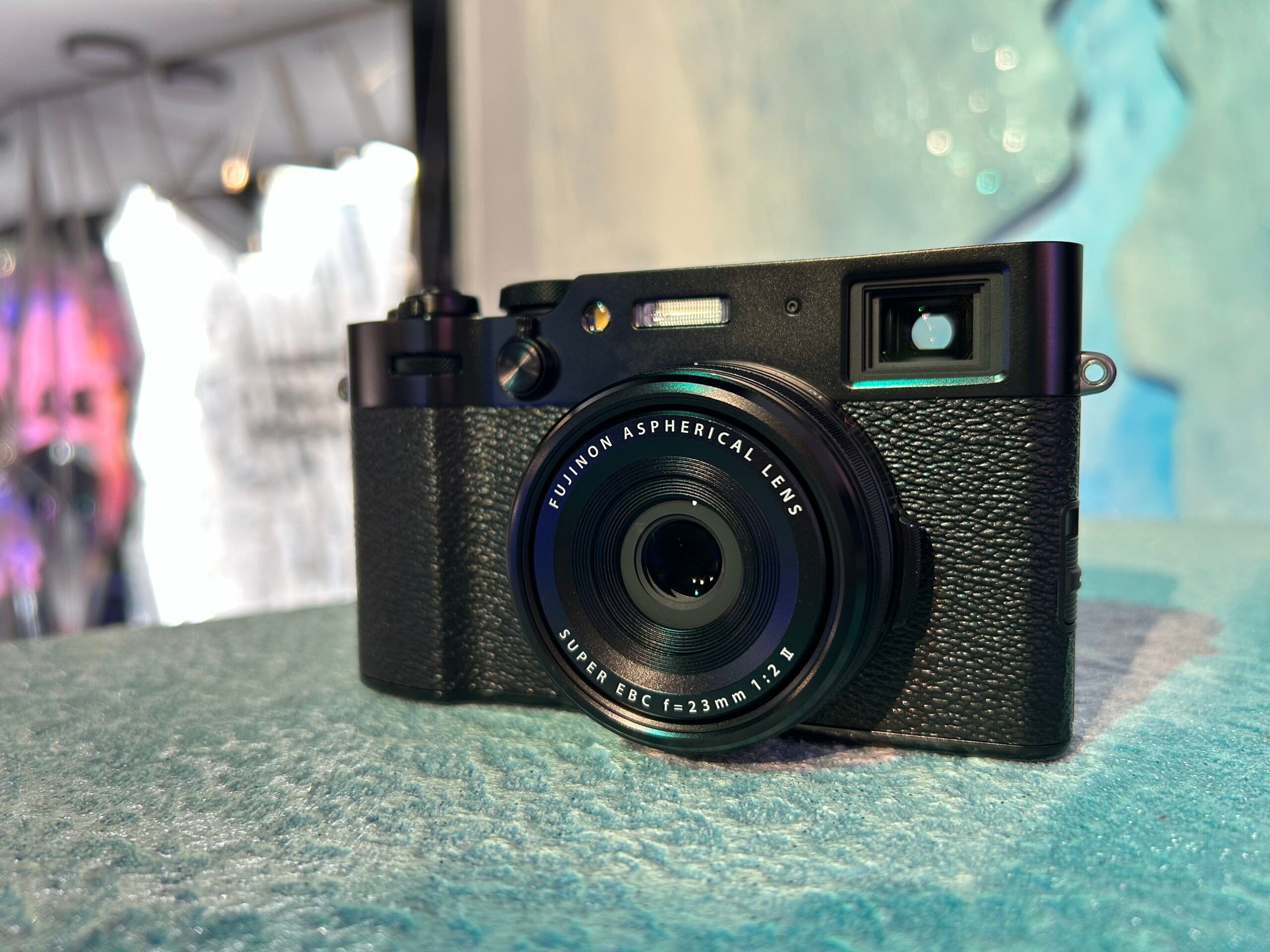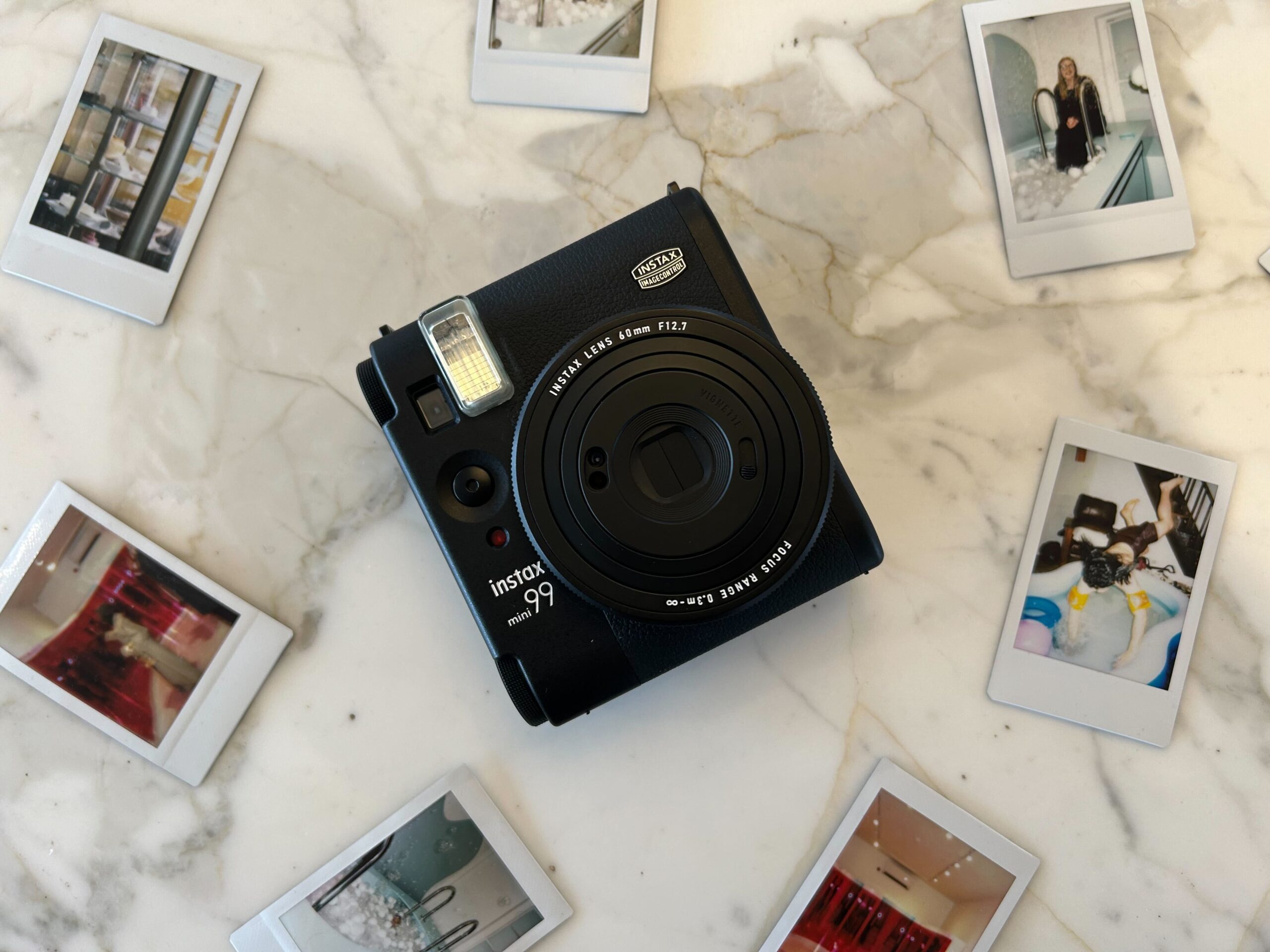Panasonic Lumix GH6 Review
A ground-breaking Micro Four Thirds camera
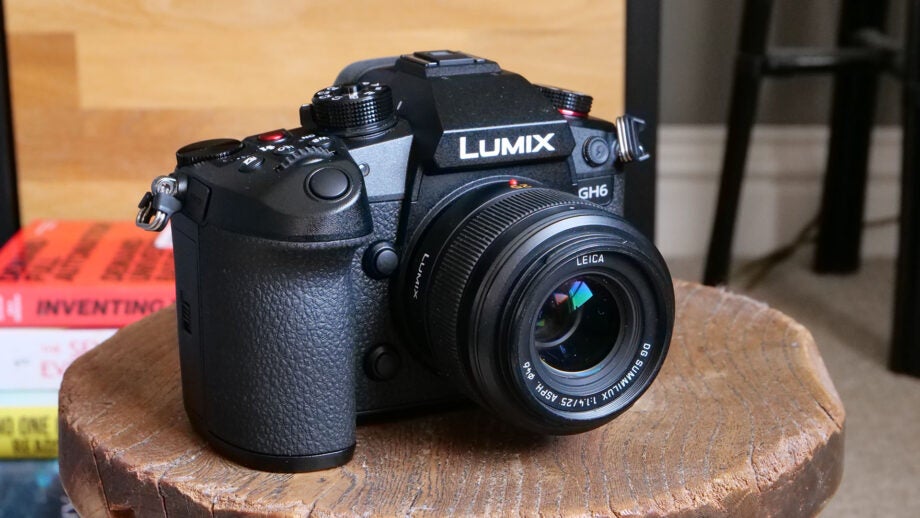

Verdict
The sheer wealth of video options make the Panasonic GH6 feel like a ground-breaking Micro Four Thirds camera, but it succeeds at almost all the “little” things too; the handling and controls, the excellent image stabilisation and the thoughtful connectivity options make it add up to a truly impressive camera, especially for its price, size and weight.
Pros
- Massive range of video modes
- Superb video image quality
- No-limit recording times
- Effective image stabilisation
- Easy handling
Cons
- Occasional autofocus quirks
- Some features unavailable at launch
Availability
- UKRRP: £1999
- USARRP: $2199
- CanadaRRP: CA$2899
- AustraliaRRP: AU$3500
Key Features
- Sensor25.2MP Live MOS sensor with a Micro Four Thirds lens mount
- High resolution captureRecords video up to 5.7K/60p in Apple ProRes 422 HQ
- Multiple card slotsCFexpress Type B and SD card slots
Introduction
Panasonic has long led the way when it comes to 4K video-focused mirrorless cameras. Trailblazing models like the Lumix GH4, GH5 and GH5S have all achieved near-legendary status among amateur enthusiasts and some professional movie makers.
But in a world where cameras with large full-frame sensors have become the filmmaking fashion, is there still a place for the Lumix G series and its tiny Micro Four Thirds sensors? If the new Panasonic Lumix GH6 is anything to go by, the answer is a resounding yes.
The company’s new Micro Four Thirds mirrorless flagship, which comes with a new 25.2MP sensor and one of the largest selections of movie options ever seen on a mirrorless camera, is a video-first hybrid that never feels like a compromise when it comes to image quality, boasts some of the best in-body image stabilisation in the business – all while managing to be relatively affordable.
Design
- Very similar look to the previous GH series cameras
- The camera is a joy to use
- Larger cooling system
The Panasonic GH6 doesn’t break the mould when it comes to its physical shape. It looks pretty much the same as every other GH series model that has come before it over the last decade or so: the general design harks back to a classic SLR shape, with a bulge on top to accommodate the viewfinder and hot shoe and a large protruding grip on the right side for the user’s right hand.
“If it ain’t broke, don’t fix it,” I say, and the familiar shape along with the control layout makes the GH6 a wonderful camera to use. Users already acquainted with Panasonic’s camera will find it particularly easy to get to grips with the controls, but the labelling, positioning and feedback from the buttons, dials and switches should make them simple to quickly master for anybody.
I found the GH6 consistently a joy to use, even on the occasions where I had to dive into the on-screen menu system to locate a particular advanced option.
There are some useful new touches too, like the front and back tally lights and extra button for video stop/start situated on the front – very handy when operating the GH6 from in front of the lens rather than behind it.
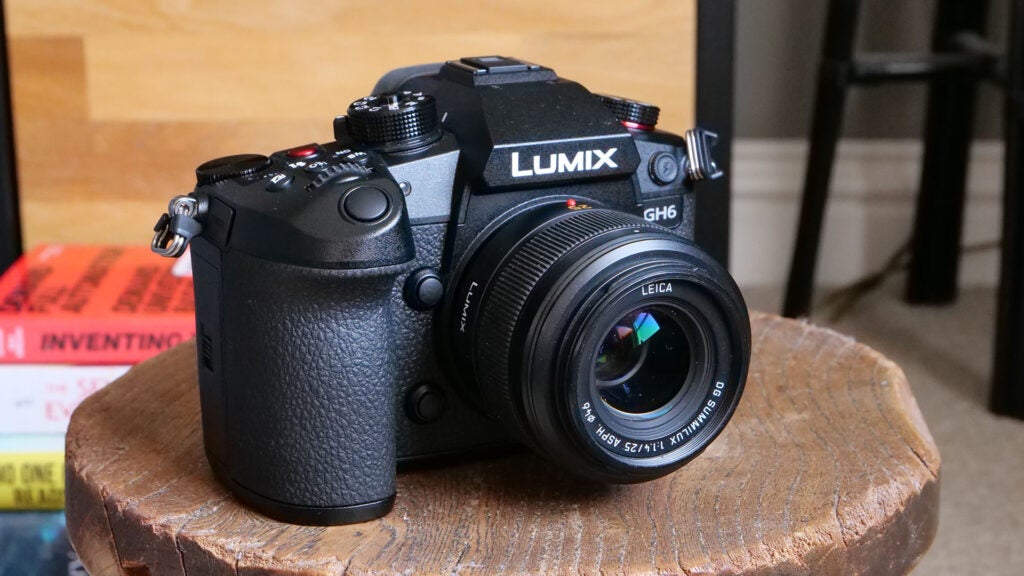
The only obvious physical difference between this and the GH5 comes as a result of the new cooling system, which requires room for airflow and vents and makes the body a bit larger and heavier than older models. It’s still lightweight and compact for such a powerful camera, though, and because of its Micro Four Thirds sensor its lenses are generally a lot smaller and lighter than those you’d need for a full-frame camera.
The GH6 has a sturdy magnesium alloy frame and Panasonic calls it “dust and splash resistant”, although with no official IP rating as yet it’s difficult to know just how far you can push that. It’ll certainly be fine in rainy conditions, and work to temperatures as low as -10ºC too.
One major upgrade over last year’s GH5 Mark II comes in the form of the 3-inch touchscreen. It’s now on a similar double-hinged design to the Panasonic S1H’s display, which gives it even greater flexibility than a regular vari-angle screen. You can point it forward, up, down and at pretty much any diagonal, which is great for achieving shots from awkward positions. In short, it’s the best screen there’s ever been on a Lumix G model.
The OLED viewfinder is small but works well thanks to a sharp resolution and full coverage of the frame. Occasionally I would have liked it to be a bit bigger to help out with manually focussing, but focus peaking and a focus assist mode that magnifies a portion of the image does help out with that.
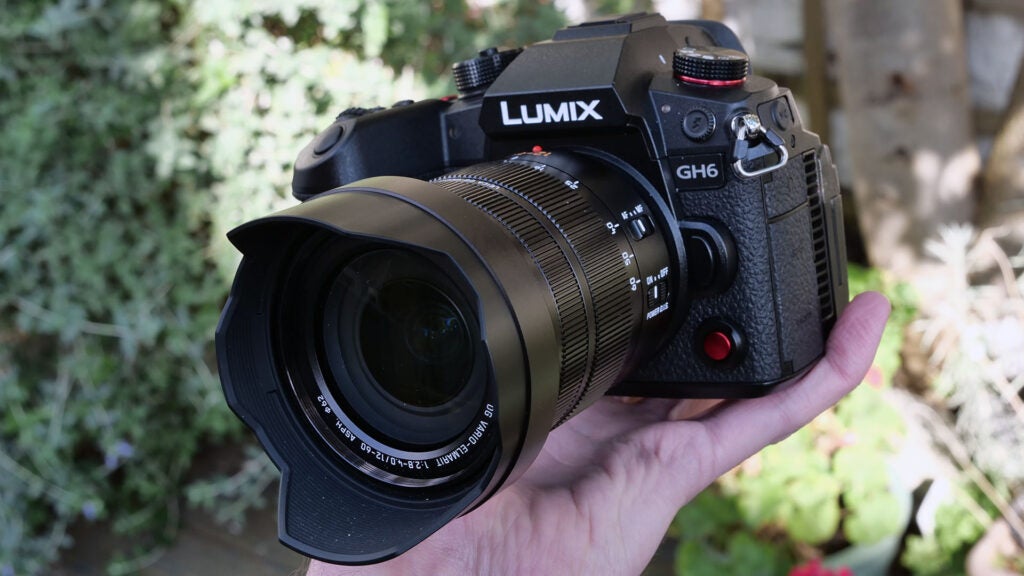
Performance and Features
- Focus on video is shown in the chosen ports
- Dual slots for storage
- Noticable upgrade over the GH5 II
As you’d expect from a video-first camera, there are dedicated headphone and microphone sockets, as well as a full-size HDMI output for external monitoring and recording. The HDMI here can carry video up to 10-bit C4K 4:2:2 at 60fps to an external recorder, while a future firmware update will allow the camera’s USB-C (which currently works for 10Gbps data transfer, battery charging and power supply purposes) to record directly to an external SSD.
For more advanced audio recording than a standard microphone allows, the GH6 supports 4-channel XLR mics – but this will require Panasonic’s optional DMW-XLR1 adapter.
On-board storage comes courtesy of removable cards, but there is a difference from previous Lumix GH series models here: the dual card slot has one slot for standard SD cards and another for newer, faster (and much pricier) CFexpress Type B cards.
A CFexpress card is a necessity for many of the more demanding video modes offered by the GH6, so most buyers are going to need to get buy one if they haven’t already. They cost a hefty £200 for a 128GB card.
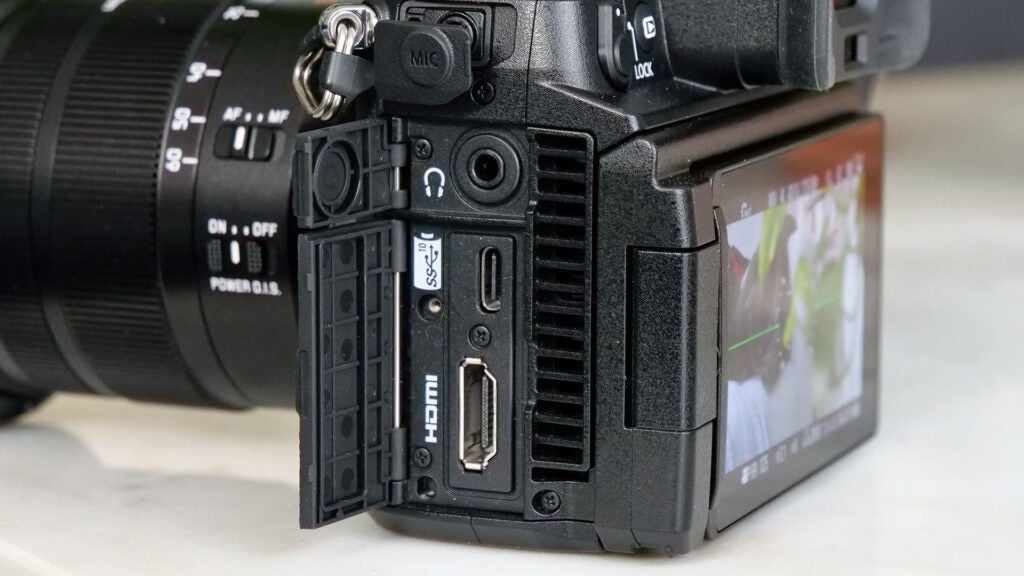
Thanks to its new sensor, new Venus Engine processor and new image stabilisation system, the GH6 gets a noticeable performance upgrade over last year’s GH5 II. It can shoot still images at a continuous burst speed of up to 75fps with an electronic shutter and handle a wide variety of demanding high-bitrate video modes (more on those below), while the in-body stabilisation offers up to 7.5 stops of motion compensation.
The stabilisation’s effects are immediately obvious when filming: you can record walk-and-talk vlogs without the background bouncing around in a nauseating fashion, and even with a telephoto lens attached you can easily capture usable, stable clips of far-off subjects.
Panasonic’s High Resolution photo mode, which captures a burst of shots and merges them together into a 100MP result, has required a tripod on previous cameras but works handheld here due to the effectiveness of the stabilisation. It’s truly impressive.
The autofocus isn’t quite so inspiring. Using the same contrast-based system as all Panasonic mirrorless models, it has a tendency to occasionally lose focus of a moving object when tracking, “hunting” to reacquire in a noticeable and potentially distracting way. This happens less than on the GH5 II, however, so it does seem like the system has been given a bump – just not to the point where it’s the equal of the hybrid autofocus setups used by Sony and Canon cameras.
Video and image quality
- Can shoot Apple ProRes 422
- No recording limits
The GH6’s Micro Four Thirds sensor doesn’t hold it back when it comes to video capability. It’s the first Lumix G camera to be able to shoot Apple ProRes 422 HQ and 422, which it currently does at 5.7K resolution and up to 60fps (lower resolutions for ProRes will be available with the forthcoming firmware update), but there’s a lot more besides that: Cinema 4K, 4K, 58K anamorphic and Full HD resolutions are all on offer, at a variety of frame- and bitrates.
4K can be captured at up to 120fps and Full HD at up to 240fps for ultra-smooth slow motion playback, and almost all the available options are at gorgeous, rich 10-bit quality.
The test video clips embedded in this review were shot at 10-bit 4K at 60fps and 120fps using the camera’s built-in Natural picture setting and have not been colour corrected or graded, but those who want to do so have a wide variety of other picture settings including Hybrid Log Gamma and V-Log to use. V-Log is a “flat” profile that requires colour correction but retains a huge amount of information – enough for around 13 stops of dynamic range rather than the usual 12.
Users won’t have to worry about overheating causing the camera to shut down and curtail their recordings, either: Panasonic promises that thanks to the cooling system, the GH6 can record without limits. I certainly had no trouble in the UK wintertime, but more testing in the height of summer would be interesting, if only to see if fan noise becomes an issue in warmer conditions.
Of course, the GH6 can shoot still photos as well. I don’t think people will be buying this with still photography in mind – it’s definitely a video machine with a side-line in stills – but it does a decent job and its high speed and excellent image stabilisation help it perform better in low light than you might imagine.


Latest deals
Should you buy it?
You want a fantastic camera for video: With excellent quality footage, a wide range of formats and resolutions and lots more, this is one of the best cameras for video around.
Photography is your main reason to buy: This is mostly a video-focused camera, and while still images look good – it’s not really a reason to buy the GH6.
Final Thoughts
Compact, lightweight and relatively affordable while being capable of capturing professional-quality video, the Panasonic GH6 is living proof that Micro Four Thirds has a place in the filmmakers’ toolbox. While the small sensor undeniably gives a different look than you’d get from a larger full-frame sensor, Micro Four Thirds also brings with it advantages like smaller, lighter lenses and more effective image stabilisation.
The GH6 certainly doesn’t feel like a compromise compared to a camera like, say, the Sony A7 III, except perhaps in extremely low light situations. Provided you can work around those its video capabilities feel quite extraordinary in a camera so compact. If you’re a filmmaker looking for a highly portable and highly effective video camera, Panasonic’s new flagship deserves consideration.
How we test
We test every camera we review thoroughly. We use set tests to compare features properly and we use it as our main device over the review period. We’ll always tell you what we find and we never, ever, accept money to review a product.
Tested in varying conditions
Tested both photo and video skills
FAQs
It can shoot Apple ProRes 422 HQ and 422, which it currently does at 5.7K resolution and up to 60fps, plus Cinema 4K, 4K, 58K anamorphic and Full HD resolutions are all on offer. 4K can be captured at up to 120fps and Full HD at up to 240fps for ultra-smooth playback.
The dual card slot has one slot for standard SD cards and another for newer, faster (and much pricier) CFexpress Type B cards.



